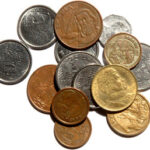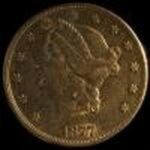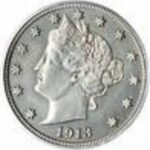If you do a search for U.S. coins on eBay, you will find over 113,000 listings. Some of the sellers are full-time dealers, some are part-time dealers and some are coin collectors. A fairly good percentage are also scam artists, ready to separate you from your hard-earned money.
As with any collectible, you should do as much research as possible before making a buying decision. Whether it’s antiques, furniture, paintings or whatever turns you on, you can wind up on the short end of the deal. Knowledge is power and can save you a lot of money in the long run. If you are not a coin collector and just want to buy one for yourself or as a present, you need to get educated on some of the common scams on eBay.
I’ve collected coins for well over 50 years now and am amazed at how quick and easy it is for novice collectors to lose money. EBay presents the perfect opportunity for both minor and major scams. Unless enough people complain to eBay or file police reports, nothing is done to remove these low-lifes from selling more junk.
Some of these fraudulent transactions include the following:
1) The Rare Bears – these sellers attach the word “rare” to almost everything. They typically sell coins that are fairly abundant but write slick copy that leads you to believe you are getting in on the ground floor of a fantastic investment. Chances are that they are not rare. I’ve even seen some sellers say certain coins are rare when you can buy them from the U.S. Mint directly for a lot less than the seller is asking.
2) The Liars – what else can you say except that the seller is a liar when they intentionally falsify the description of an item? A good example is the new George Washington Presidential Dollar coin that was released on February 15, 2007. The Mint produced these with inscriptions on the edge of the coin that are normally found on the front (obverse) and the back (reverse). Due to the random nature of the coin blanks being inserted into the edging machine, the inscriptions will be face up or face down about half the time. Yet a lot of sellers of these normal coins are calling them “upside-down errors”, implying the Mint “made a mistake when they stamped the edges”. BS. You can get these dollar coins at face value from local banks that carry them.
3) Phony Details – It seems a lot of the coins being auctioned on eBay are from “estates”. Yeah, right. The seller claims the coin or bag of coins is from an old estate hoard of an elderly person who put them away in a box 60 years ago. This is usually followed with ad copy that says, “there’s no telling what rare coins you might find in this selection. He’s right — there’s really no telling and he doesn’t guarantee that you’ll find any rarities in the lot. Think about it: if the seller even thought there was a chance that a true rarity was present, he wouldn’t be offering an “unsearched roll (or grab bag) of coins” without looking through it himself.
4) The “I’m not a collector myself, but…”: This seller puts a coin or collection up for bidding and has a very short description of the coin that doesn’t provide much information for you to consider. Then he claims “I’m not a collector, so look at the pictures and judge the coin for yourself”. This is usually a red flag that the seller does know something about coin collecting and is attempting to hide some details from you. The pictures usually fall into three categories: out of focus, too tiny to see details, or they look like a black cat at midnight. If you can’t see the coins clearly, how can you “judge for yourself”? The coin may have scratches or some other defect that renders it near worthless, or has been harshly cleaned. Stay away from these listings as they are not usually worth it. I’m not saying 100% of them are fraudulent, but why take the chance when there are loads of other listings?
5) The Raw Coin Seller – Raw coins are those that have not been certified and graded by a third party grading company, like Professional Coin Grading Service (PCGS), Numismatic Guarantee Corporation (NGC), and the American Numismatic Association (ANACS). Those are the top three that will evaluate your coin, certify it as authentic and give it a numerical grade, depending on condition. The raw coin seller will usually leave out information about the coin condition, such as previous cleaning, dipping, alterations, etc. If you buy a raw coin and it matches what you saw on the eBay listing, you might be perfectly satisfied with your purchase and congratulate yourself for a great buy. However, if you eventually sell it to a coin dealer or knowledgeable coin collector, you may be in for a rude awakening when they tell you that the coin has been cleaned and they will give you only 25% of what you paid for it.
6) The Uncleaned Coin Sellers – These are found in the ancient coin section on eBay, selling Roman, Greek, Persian, etc., coins that were “found in a burial mound in the Middle East.” Normally they are sold in multiples, like 10 or 20 uncleaned coins. These literally are uncleaned and have dirt and encrustations on them with the coin details barely visible. I have bought some of these and had a lot of fun cleaning them and discovering some really neat Roman coins from 2,000 years ago. Out of a lot of ten coins, you might get two or three that can actually be cleaned up to see the designs and verify their attribution. The problem is similar to #3 above, as the seller usually claims “gold and silver found!”
His ad copy implies that buyers of his listings have found ancient gold and silver coins in his uncleaned lots. And the ratings seem to indicate this if you look at the buyer feedback. But, the buyers see a gold colored coin after cleaning and mistake it for gold. It’s really a bronze coin made shiny to look like gold after they get done cleaning. They also find “silver” coins. But these normally are coins that had a “silver wash” on the surface of a base metal, so they are not silver coins. The bottom line is these can be fun and educational, especially for kids, but don’t expect to find a rarity or precious metal coin. The finders in Europe and the Middle East picked them out before selling them in huge lots to dealers in the States.
How can you avoid these and other traps? By becoming knowledgeable in your hobby. Get a subscription to Numismatic News, or Coin World. Join a coin forum online for free. The one I use that is excellent is the Collector’s Universe coin forum sponsored by PCGS. I’ve provided the link in the resources section. People constantly ask questions on the forum and get answers fairly fast. Don’t be concerned that you’re a “newb” or that your question is “dumb”. The majority of other members will welcome you and give you a no-nonsense answer to your question. I would strongly suggest joining the forum before entering any bids for coins on eBay.
Happy collecting!





